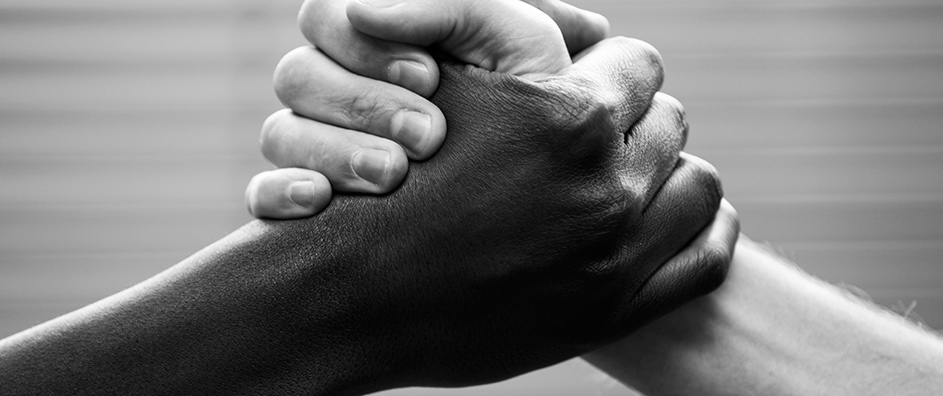In the tapestry of American history, the interwoven threads of divisions and connections reveal profound insights into the human condition. One of the most poignant narratives within this historical continuum is the tale of “Breaking Bread between Black & White in the Jim Crow Era.” This story, steeped in the Bahá’í teachings, resonates with themes of racial unity, compassion, and the transformative power of community. It stands as a compelling exemplar of the ethical imperatives that Bahá’í principles advocate. The teachings permeate this narrative, drawing individuals toward an intrinsic understanding of our shared humanity.
During the Jim Crow Era, a time characterized by legal segregation and systemic oppression, the notion of breaking bread together emerged as an emblematic act of defiance against social stratification. The act of sharing food is a deeply ingrained ritual across cultures, often serving as a bridge between disparate communities. In the context of Bahá’í teachings, this metaphor transcends mere sustenance; it emerges as a symbol of unity and collective integrity, emphasizing the profound reality that our spiritual and material well-being is interdependent.
The Bahá’í teachings implore individuals to recoil from prejudice and embrace the oneness of humanity, positing that the distinctions based on race or background are inconsequential in the face of our shared existence. The very essence of this philosophy beckons individuals of divergent heritages to engage in dialogue, to foster relationships, and, ultimately, to unite in purpose. As we explore the narrative of breaking bread during this tumultuous epoch, we can delineate the lessons that emerge from such interactions, illuminating pathways to unity.
The historical context of the Jim Crow Era is essential to understanding this narrative. Legalized discrimination permeated various aspects of life, from public transport to educational institutions, ultimately entrenching divisions within society. Yet, amidst this adversity, opportunities for connection arose. When individuals from differing racial backgrounds came together to share meals, these seemingly innocuous moments became crucibles for empathy, understanding, and kinship. The Bahá’í concept of “the oneness of humanity” finds vivid expression in these gatherings, which, while understated, yielded significant social implications.
Sharing food is inherently a communal act that transcends boundaries and ignites dialogues. Individuals engage in storytelling, laughter, and the exchange of ideas, unknowingly dismantling the walls of prejudice that the era sought to construct. It is during these intimate gatherings that individuals recognize the richness of one another’s experiences, discovering that there simmers a shared plight beneath the surface of racial identities. Food, in this sense, morphs into a medium of reconciliation — an avenue for appreciating the fullness of one another’s narratives.
Moreover, the act of breaking bread can be seen as a profound metaphor for the Bahá’í understanding of divine justice. The teachings emphasize equality among all races and encourage actions that reflect this egalitarian ethos. By reaching across the table, both literally and figuratively, individuals can begin to witness the inherent dignity and worth of each person. This process of recognition and validation becomes pivotal in fostering a society grounded in equity and mutual respect.
Furthermore, these shared moments served to nurture resilience in a hostile environment. Individuals gathered to break bread not only to sustain their bodies but also to fortify their spirits against the pervasive despondency of systemic racism. In their unity, they cultivated a sanctuary, creating a space where hope could germinate and grow. This resilience, cultivated through collective action, aligns seamlessly with the Bahá’í principle of working collaboratively toward a common good. Together, participants in these gatherings were not merely addressing immediate needs for sustenance but were sowing the seeds of social transformation.
The tangible results of these acts of unity were often felt beyond the dinner table, manifesting as grassroots movements aimed at fostering civil rights and social justice. The relationships forged through the simple act of sharing a meal often culminated in collective efforts to resist oppression — be it through advocacy, community organizing, or educational initiatives. In this way, the Bahá’í teachings serve as a compass, providing ethical direction that inspires individuals to channel their unity into actionable change.
As we reflect on the narrative of breaking bread between Black and White communities during the Jim Crow Era, it becomes evident that the underlying tenets of Bahá’í philosophy are not mere abstractions; they are a clarion call to action. The teachings advocate for the dismantling of prejudices, the fostering of friendships across cultural divides, and the recognition of our shared humanity as paramount responsibilities for every individual. It is a reminder that, while times of division may loom large, opportunities for connection exist. It beckons us to embrace the power of communal settings as fertile grounds for sowing the seeds of unity and love.
In conclusion, the act of breaking bread embodies a rich metaphor interlaced with the ideals central to Bahá’í teachings. It represents an enduring testament to the power of human connection, even amidst adversity. By engaging with one another through the simple, yet profound act of sharing a meal, individuals can transcend societal barriers, cultivate understanding, and ultimately foster a more just and unified world. These gatherings echo through time, reminding us that the path to unity is paved with understanding, compassion, and a shared commitment to bettering humanity, in accordance with the divine teachings that cherish the oneness of all.
